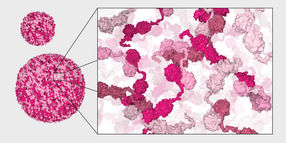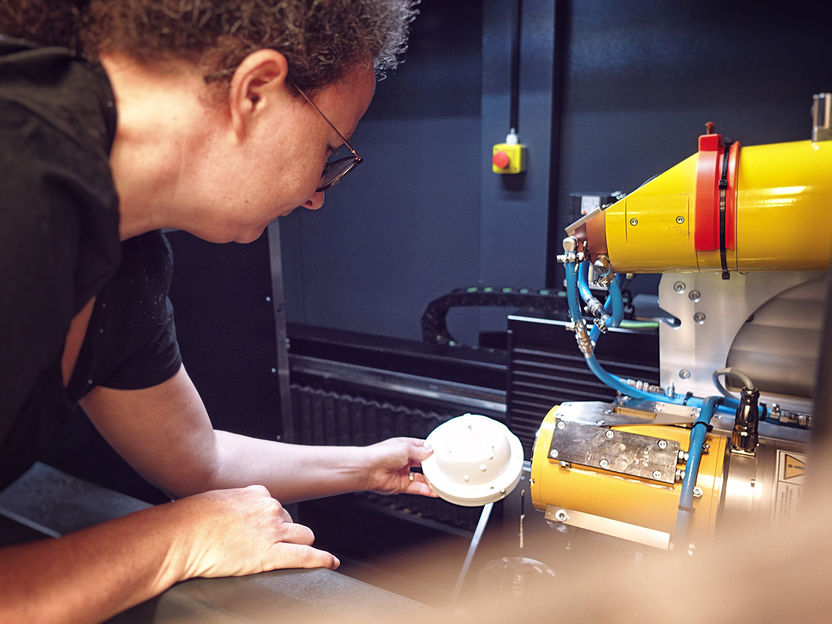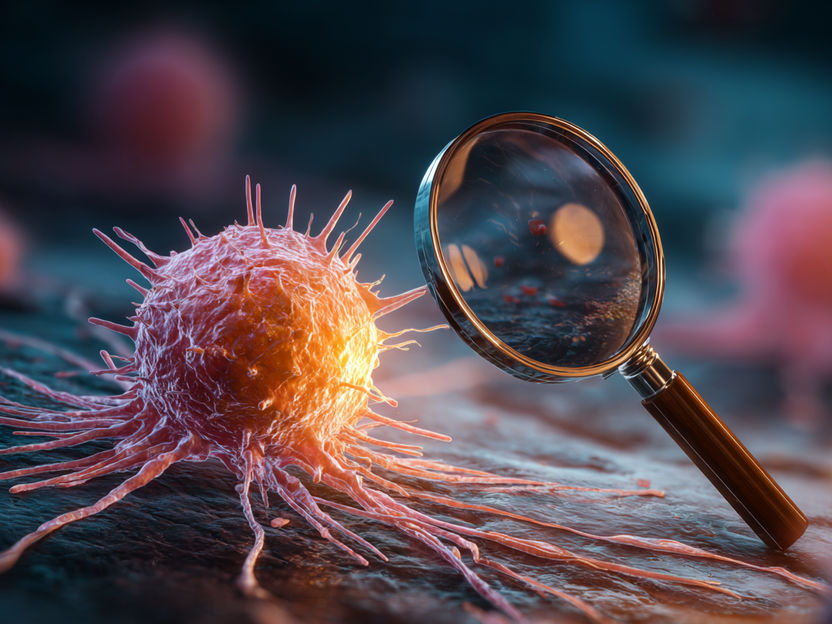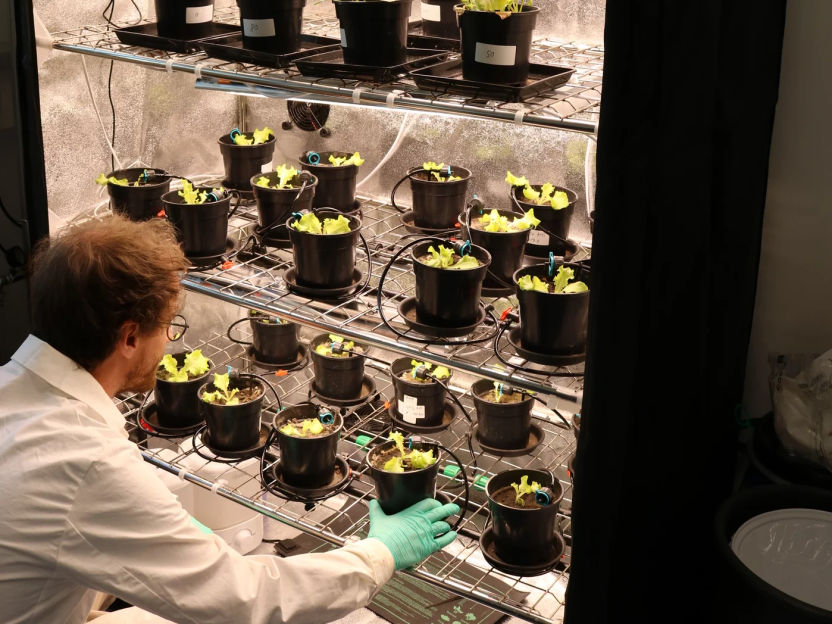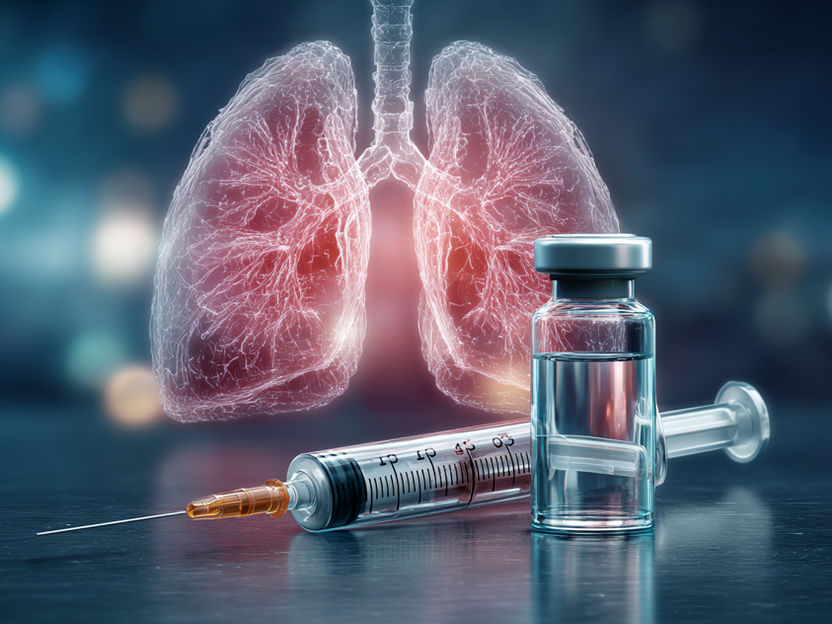Lost in translation: New vulnerability of the aging brain discovered
International research team discovered that in the aging brain, certain proteins are lost even though their mRNA blueprints remain intact.
Advertisement
proteostasis describes the balance of proteins in cells, which includes the continuous production of new proteins, their correct folding, and the degradation of damaged or redundant proteins. This balance is essential for cell health; if it is out of balance, misfolded or redundant proteins can accumulate—with potentially harmful consequences. Such dysfunctions are a typical feature of aging and are closely linked to diseases such as Alzheimer's and Parkinson's.

During protein biosynthesis in the aging brain, ribosomes slow down during translation, especially at sequences with many basic amino acids. As a result, important proteins are produced less efficiently despite the presence of mRNA templates.
Copyright Graphic: FLI / Kerstin Wagner; AI-generated with ChatGPT
An international research team from the Leibniz Institute on Aging – Fritz Lipmann Institute (FLI) in Jena, the Scuola Normale Superiore in Pisa, and Stanford University has now investigated how the aging process influences proteostasis in the brain. In the process, they identified a central mechanism that disrupts proteostasis in the aging brain—with far-reaching consequences. The results have now been published in the journal “Science”.
Model organism killifish provides precise insights
The brain of the short-lived killifish (Nothobranchius furzeri), an established model organism in aging research that shows typical age-related changes in the brain, such as neurodegenerative processes, was investigated.
The team comprehensively analyzed how gene expression is regulated during aging—from the transcription of genetic information (transcriptome) to protein production by ribosomes (translatome) to the actual composition of the proteins formed (proteome). “This multi-step approach allowed us to determine very precisely at which level age-related changes occur and which mechanisms are disrupted,” explains Domenico Di Fraia, former graduate student of the FLI and co-first author of the study.
Protein loss despite intact blueprint
The study focused on a remarkable observation: many proteins, especially those with numerous basic amino acids (e.g., arginine, lysine), decreased significantly in the aging brain. These proteins play a central role in DNA and RNA processing and in the formation of ribosomes. Their absence can have far-reaching cellular consequences.
Surprisingly, the mRNA, i.e., the corresponding blueprint for these proteins, was present in normal amounts. “This was a clear sign to us that the problem lay not in the degradation but in the production of the proteins,” explains Alessandro Ori, associated research group leader at the FLI and senior author of the study.
Further analyses showed that the ribosomes—the cell's “protein factories” that produce proteins from mRNA blueprints—became stuck on sequences containing basic amino acids. The ribosomes “paused” or even collided, preventing the corresponding protein from being completed correctly or even formed initially. This is an indication of a specific disorder of translation in the aging brain.
These disorders mainly affected proteins responsible for important central tasks such as DNA repair, RNA processing, cell division, and energy production in the mitochondria. They are therefore closely linked to many already known “hallmarks of aging”—typical biological characteristics of aging.
Translation disrupted – not protein degradation
To rule out the possibility that the protein loss was not based on increased degradation, the team specifically blocked the proteasome—the cellular “waste disposal system.” This ensures the quality of proteins by breaking down damaged, misfolded, or no longer needed proteins, thereby helping to maintain the function and stability of cellular processes.
“Although this changed the proteome, the loss of basic proteins remained. So, they were not degraded, but apparently not produced correctly in the first place. This confirmed our assumption that the cause lies at the level of translation— i.e., protein biosynthesis,” continued Antonio Marino, former graduate student of the FLI and co-first author of the study.
Chain reaction in the aging brain
Using an integrative model, it was also shown that reduced ribosome function during aging affects the production of certain proteins more than others. Some mRNAs are even read more efficiently because there are fewer “traffic jams,” while others are hardly read at all. This results in a kind of chain reaction: missing ribosomes promote further changes in translation and further contribute to modify the protein composition of old brains.
“Proteins in the mitochondria and nervous system are particularly affected,” adds Alessandro Ori. “This imbalance disrupts the balance of proteins in the brain and could be a possible trigger for age-related diseases such as Alzheimer’s or Parkinson’s.”
Groundbreaking findings for aging and dementia research
The study provides the first conclusive explanation for the phenomenon of mRNA and protein levels often no longer matching in the aging brain, which is also known to occur in humans. The reason is a malfunction in protein synthesis, in which ribosomes become stuck. “We have identified a weak point in the cellular machinery that increasingly fails with aging, “This malfunction could play a central role in the development of neurodegenerative diseases.”
These findings extend previous observations from studies in nematodes and show that translation disorders are a major factor in the decline of proteostasis in aging vertebrate brains.
In the long term, the findings could open up new possibilities for therapies that specifically prevent the loss of important proteins—and thus counteract neurodegenerative diseases.















